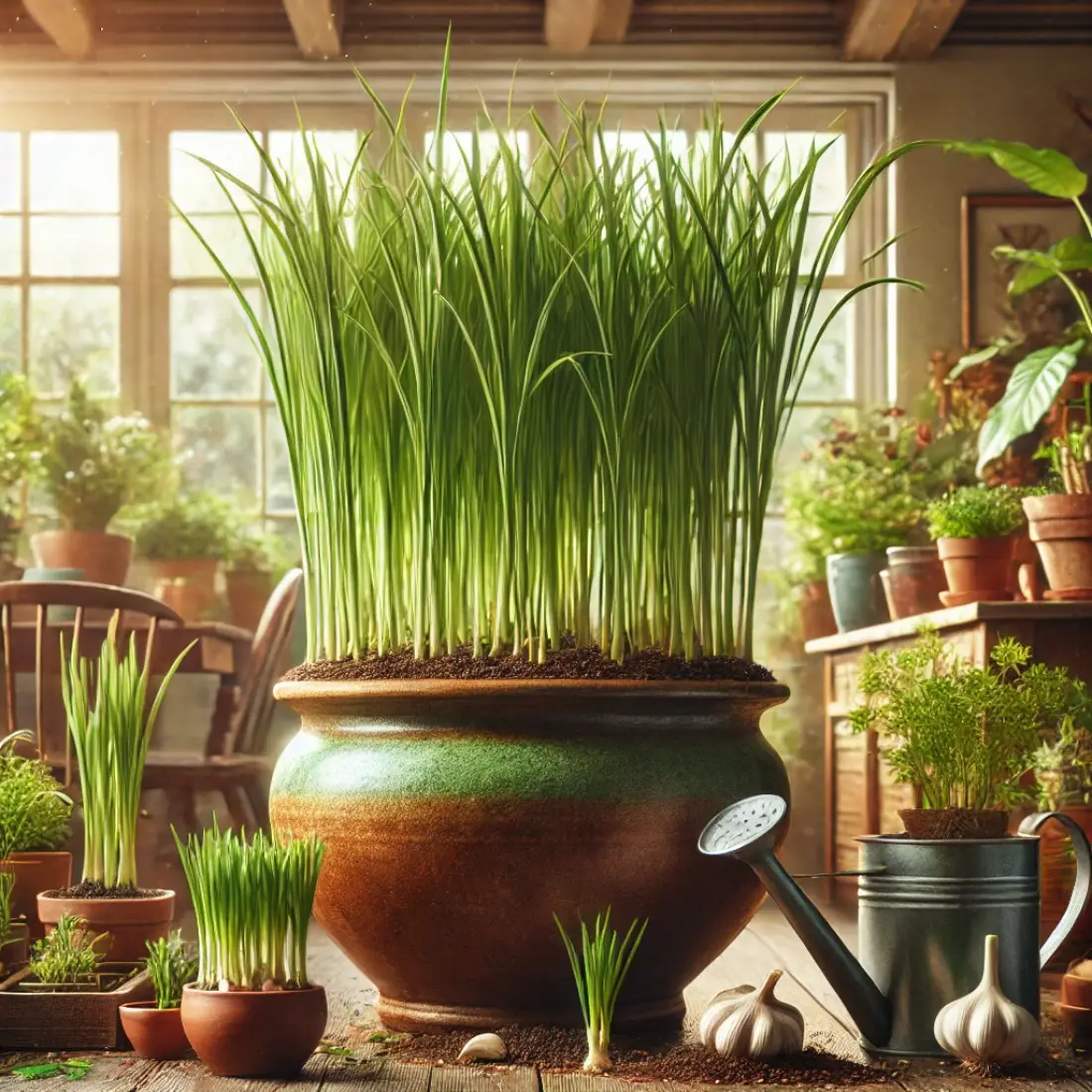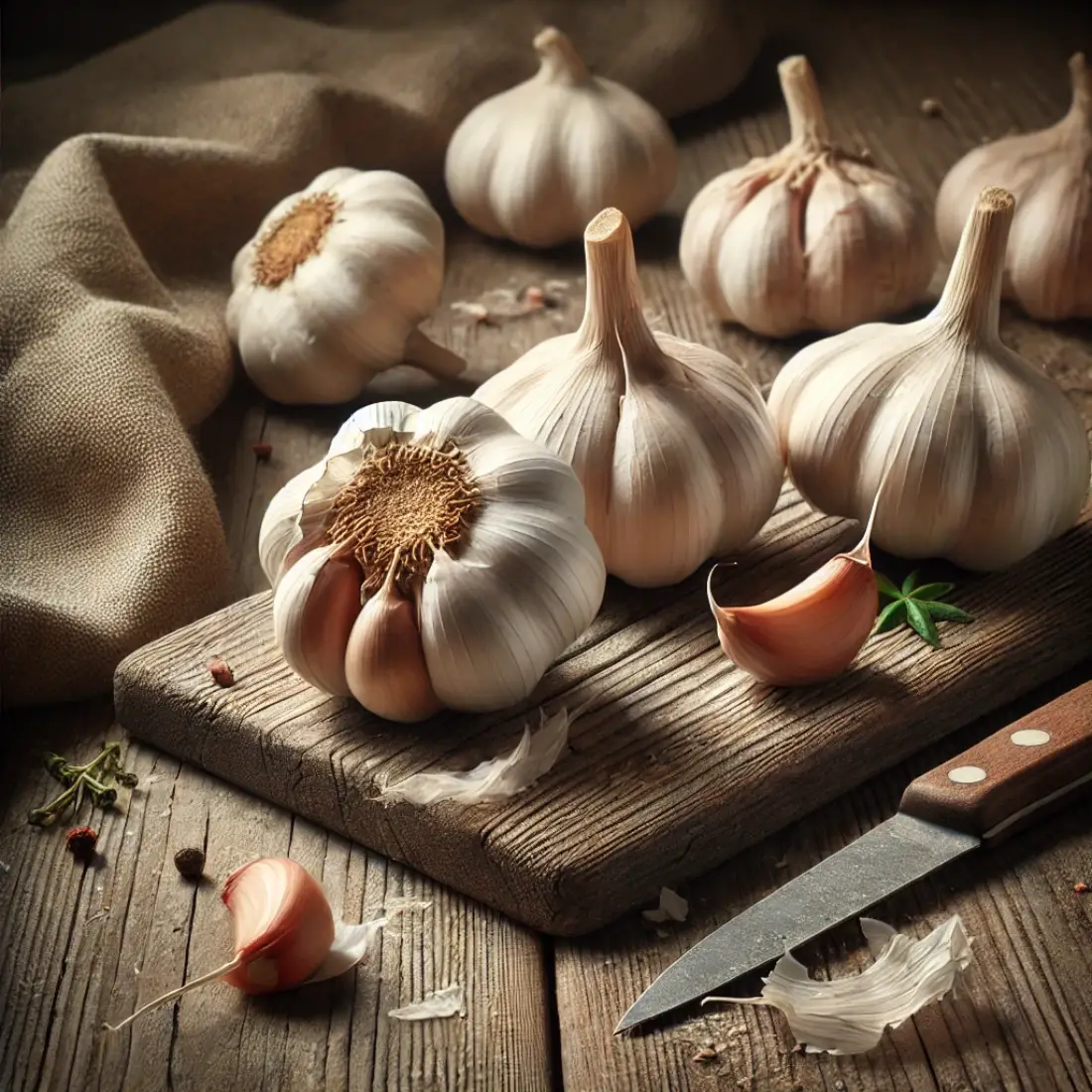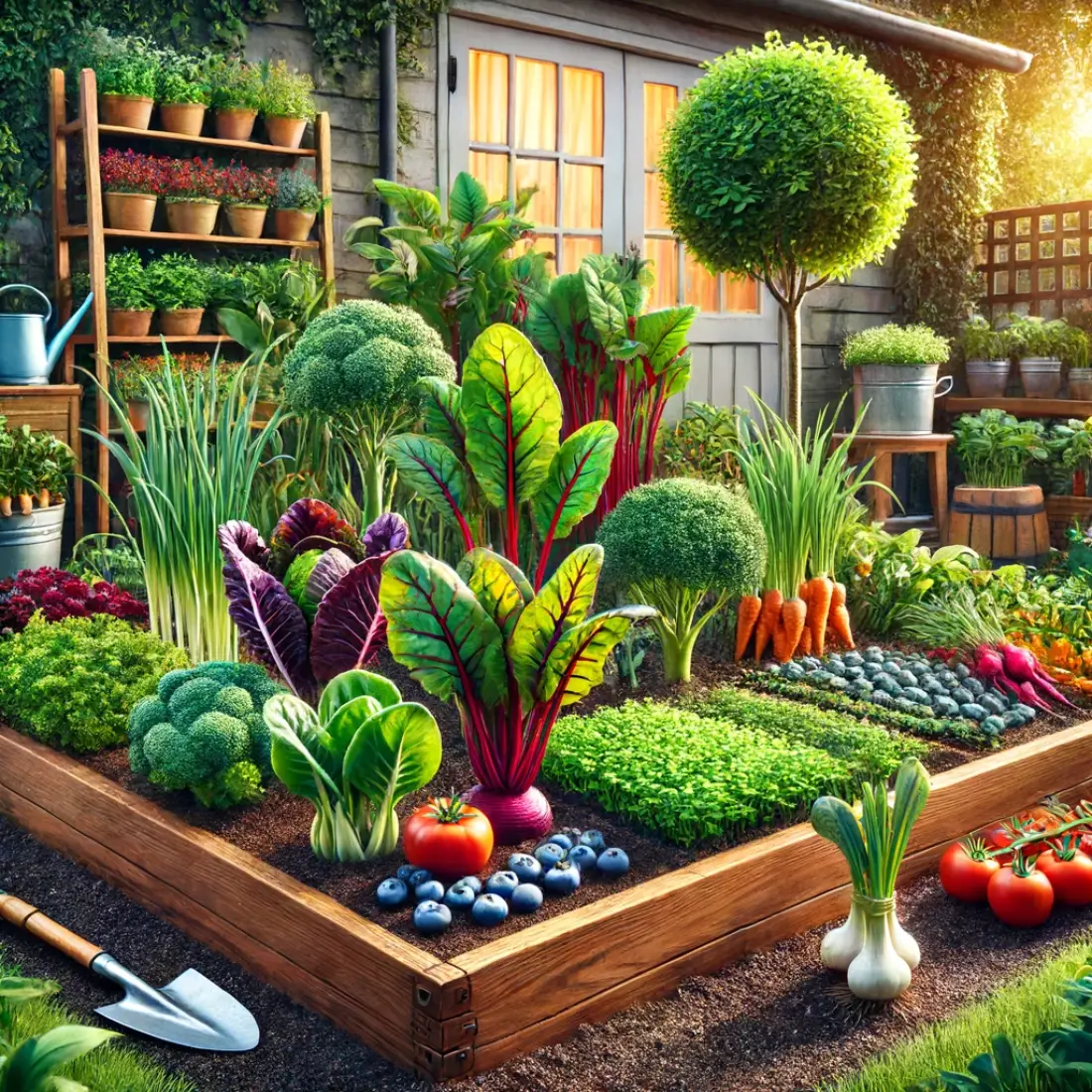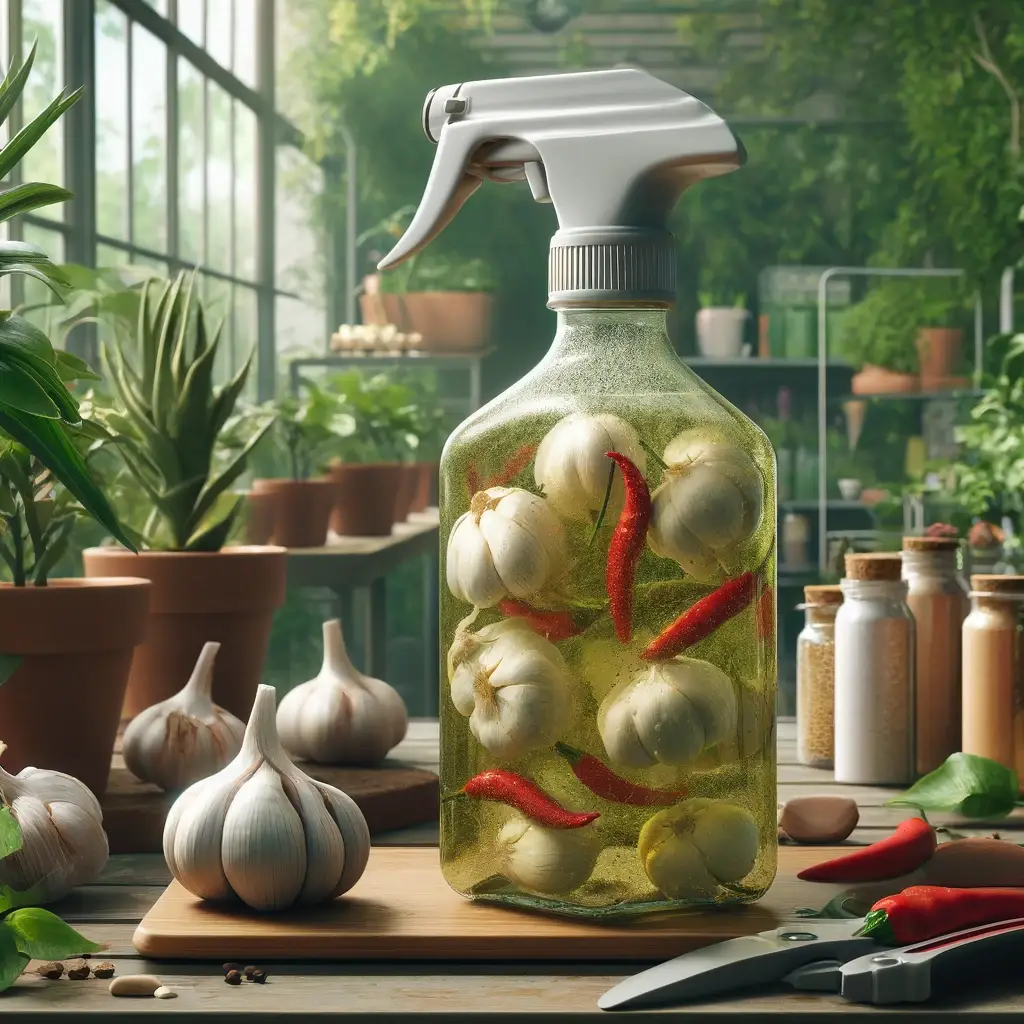Garlic (Allium sativum) is a hardy perennial plant known for its culinary and medicinal uses. Originating from Central Asia, it has been valued for thousands of years across various cultures for its flavor and health benefits. Ancient civilizations, including the Egyptians, Greeks, and Romans, revered garlic for its supposed strength-enhancing and protective properties.
Today, garlic remains a staple in kitchens worldwide, prized for its pungent flavor and numerous health benefits, such as boosting the immune system and supporting cardiovascular health. It is easy to grow and requires minimal maintenance, making it an excellent choice for gardeners of all levels. Additionally, garlic acts as a natural pest repellent, benefiting other plants in the garden.
Table of Contents
Growing Garlic Outdoor
Garlic is a versatile and hardy plant that can be a great addition to any garden. Understanding the different varieties and how to properly plant and care for garlic will ensure a successful harvest.
Varieties of Garlic: There are two main types of garlic: hardneck and softneck. Hardneck garlic thrives in colder climates and has a hard central stalk, producing fewer but larger cloves. Softneck garlic, on the other hand, prefers milder climates, has more flexible stems, and produces more cloves, which are smaller.
Choosing the Right Garlic for Your Climate: Selecting the appropriate variety for your local climate is crucial. Hardneck garlic is best suited for regions with cold winters, while softneck garlic is ideal for milder areas.

Planting Garlic: The best time to plant garlic is in the fall, about 4-6 weeks before the first frost. Prepare well-drained soil enriched with organic matter, aiming for a pH level around 6.0-7.0. Plant the cloves 2 inches deep with the pointed end up, spacing them 4-6 inches apart in rows 12-18 inches apart. Mulch the area to protect the cloves over winter and to suppress weeds.
Caring for Garlic Plants: Garlic plants require consistent moisture but should not be waterlogged. Water regularly, reducing the amount as the bulbs mature. Fertilize with a balanced organic fertilizer at planting time and again in early spring. Weed control is essential; regularly remove weeds to prevent competition for nutrients.
Pest and Disease Management: Garlic can be affected by pests like aphids, onion maggots, and nematodes, and diseases such as white rot, downy mildew, and rust. To manage pests organically, use neem oil or insecticidal soap. Prevent diseases by practicing crop rotation and ensuring proper spacing between plants.
Growing Garlic Indoors
Growing garlic indoors is a rewarding project that can provide fresh garlic year-round.
Planting Garlic Indoors
To start, choose a container that is at least 6 inches deep and has good drainage holes. Ensure the container is wide enough to accommodate the spacing needs of the garlic cloves. Fill the container with a well-draining potting mix, such as a mixture of potting soil, sand, and compost. The soil should be loose and rich in organic matter, with a pH level around 6.0-7.0.
Select healthy, firm cloves from organic garlic bulbs, avoiding grocery store garlic treated to prevent sprouting. Separate the cloves, keeping the papery skin intact. Plant the cloves 2 inches deep with the pointed end facing up, spacing them about 4 inches apart.
Place the container in a location that receives at least 6-8 hours of direct sunlight daily. If natural light is insufficient, use a grow light to ensure the garlic gets adequate light.
Caring for Indoor Garlic Plants
Keep the soil consistently moist but not waterlogged. Water thoroughly when the top inch of soil feels dry, ensuring excess water drains out to prevent root rot. Feed the garlic with an organic liquid fertilizer every 2-3 weeks, using a fertilizer high in nitrogen to promote healthy leaf growth.
Maintain a temperature range of 60-75°F (15-24°C) and ensure good air circulation around the plants to prevent fungal diseases. Indoor garlic is less prone to pests, but keep an eye out for aphids and mites, and use neem oil or insecticidal soap if needed. Avoid overwatering to prevent diseases like root rot and mildew.
Prune any yellowing leaves to maintain plant health. If growing hardneck garlic, cut the flower stalks (scapes) when they appear to encourage bulb growth.

Benefits of Growing Garlic
Growing garlic offers a wide array of benefits that extend beyond its culinary uses. From health advantages to its role in the garden ecosystem, garlic is a valuable addition to any home garden.
Health Benefits
- Nutritional Content: Garlic is rich in vitamins C and B6, manganese, selenium, and fiber. These nutrients are essential for maintaining overall health.
- Antimicrobial: Garlic contains allicin, a compound with potent antibacterial, antiviral, and antifungal properties. This makes it effective in fighting infections and boosting the immune system.
- Cardiovascular Health: Regular consumption of garlic can help lower blood pressure, reduce cholesterol levels, and improve heart health by promoting better blood circulation.
- Antioxidant Properties: Garlic is a strong antioxidant, helping to protect cells from damage and reduce inflammation.
Garden Benefits
- Natural Pest Repellent: Garlic’s strong scent acts as a natural deterrent for many common garden pests, including aphids, spider mites, and Japanese beetles. Planting garlic near other crops can help protect them from pest infestations.
- Companion Planting: Garlic is an excellent companion plant for various vegetables and flowers. It can improve the growth and flavor of neighboring plants like tomatoes, carrots, and roses by repelling harmful insects and even certain soil-borne pathogens.
Culinary Uses
- Fresh Garlic in Cooking: Garlic adds a distinctive flavor to a wide range of dishes, from soups and sauces to marinades and stir-fries. Freshly harvested garlic is particularly aromatic and flavorful.
- Preserving Garlic: Homegrown garlic can be preserved by drying, freezing, or pickling, ensuring you have a steady supply throughout the year.
Medicinal and Herbal Uses
- Home Remedies: Garlic has been used in traditional medicine for centuries. It can be used in home remedies to treat colds, coughs, and other minor ailments. For example, garlic-infused honey is a popular remedy for sore throats.
- Herbal Preparations: Garlic can be incorporated into various herbal preparations, including tinctures, oils, and poultices, to harness its health benefits.
DIY Garlic Products
- Garlic Oil: Making garlic-infused oil is a simple way to incorporate its flavor into your cooking. It can also be used topically for its antimicrobial properties.
- Garlic Powder: Drying and grinding garlic into powder provides a convenient way to add its flavor to dishes without the need for fresh cloves.
Decorative Uses
- Garlic Braids: Braiding garlic not only provides a practical way to store it but also adds a rustic, decorative element to your kitchen.
- Ornamental Garlic Varieties: Some garlic varieties, like the flowering Allium species, are grown for their attractive blooms and can enhance the aesthetic appeal of your garden.
Home Remedies for Pest and Diseases with Garlic
Garlic’s natural properties make it an effective and eco-friendly solution for managing pests and diseases in your garden. Here are some tried-and-true garlic-based home remedies:
Garlic Spray for Pests
Garlic spray is a powerful and natural insecticide that can deter a variety of garden pests.
Ingredients:
- 1 head of garlic
- 2 cups of water
- 1 tablespoon of vegetable oil
- 1 teaspoon of liquid soap (mild, non-detergent)
Instructions:
- Prepare Garlic: Peel the garlic cloves and blend them with water until smooth.
- Strain: Strain the mixture through a fine mesh or cheesecloth to remove solid particles.
- Combine Ingredients: Mix the strained garlic water with vegetable oil and liquid soap.
- Dilute: Add the mixture to a gallon of water and mix well.
- Application: Pour the solution into a spray bottle and apply it to the plants, focusing on the undersides of leaves and stems where pests like to hide.
Apply in the early morning or late evening to avoid leaf burn from the sun. Test on a small area first to ensure it doesn’t harm the plants. Reapply every week or after rain.
Garlic Fungicide Spray
Garlic’s antifungal properties can help manage fungal diseases such as powdery mildew, black spot, and downy mildew.
Ingredients:
- 2 bulbs of garlic
- 1 quart of water
Instructions:
- Prepare Garlic: Crush the garlic bulbs and let them sit for 24 hours to release allicin, the active antifungal compound.
- Boil Water: Bring the water to a boil and then remove it from heat.
- Combine: Add the crushed garlic to the hot water and let it steep until cool.
- Strain: Strain the mixture and pour it into a spray bottle.
Spray the garlic solution on affected plants, ensuring thorough coverage of the leaves and stems. Apply every 7-10 days or after rain.
Garlic Soil Treatment
Garlic can also be used as a soil treatment to deter soil-borne pests and pathogens.
Ingredients:
- Several cloves of garlic
- Water
Instructions:
- Crush Garlic: Crush a few cloves of garlic.
- Steep in Water: Soak the crushed garlic in water overnight.
- Strain: Strain the solution and dilute it with more water if necessary.
Pour the garlic water directly into the soil around the base of the plants. Repeat every few weeks to maintain effectiveness.
Garlic Companion Planting
Planting garlic among other crops can naturally repel pests and protect plants from diseases.
How to Use:
- Interplanting: Plant garlic cloves around susceptible crops such as tomatoes, peppers, and roses.
- Borders and Rows: Use garlic as a border plant or intersperse rows of garlic throughout the garden.
Benefits:
- Deters pests like aphids, spider mites, and Japanese beetles.
- Helps reduce fungal infections in nearby plants.
FAQs about Growing and Using Garlic
What is the best time to plant garlic?
The best time to plant garlic is in the fall, about 4-6 weeks before the first frost. This allows the cloves to establish roots before winter.
Can I grow garlic indoors, and if so, how?
Yes, garlic can be grown indoors. Use a container with good drainage, fill it with well-draining potting mix, and plant cloves 2 inches deep. Ensure the container gets at least 6-8 hours of light daily, using a grow light if necessary.
What types of garlic are best for my climate?
Hardneck garlic is best for colder climates, while softneck garlic thrives in milder areas. Choose the variety that matches your local climate conditions.
How often should I water my garlic plants?
Keep the soil consistently moist but not waterlogged. Water thoroughly when the top inch of soil feels dry and reduce watering as the bulbs mature.
What are common pests that affect garlic, and how can I prevent them?
Common pests include aphids, onion maggots, and nematodes. Prevent them by using garlic spray, practicing crop rotation, and ensuring good garden hygiene.
How do I know when my garlic is ready to harvest?
Garlic is ready to harvest when the lower leaves turn yellow and begin to dry out, while the upper leaves remain green. This usually occurs in mid to late summer.
How should I store harvested garlic?
Cure garlic by drying it in a well-ventilated, dry, and shaded area for 2-4 weeks. Store cured garlic in a cool, dark, and dry place, using mesh bags or baskets to allow air circulation.
What are the health benefits of garlic?
Garlic is rich in vitamins and minerals, and it has antimicrobial, anti-inflammatory, and antioxidant properties. It supports cardiovascular health and boosts the immune system.
How can I use garlic to naturally repel pests in my garden?
Garlic can be used as a natural pest repellent by making a garlic spray. Blend garlic with water, strain, and mix with vegetable oil and liquid soap. Spray this solution on plants to deter pests.
Can garlic help prevent plant diseases?
Yes, garlic’s antifungal properties can help prevent diseases like powdery mildew and downy mildew. Use a garlic fungicide spray made by steeping crushed garlic in hot water, then spraying it on affected plants.









